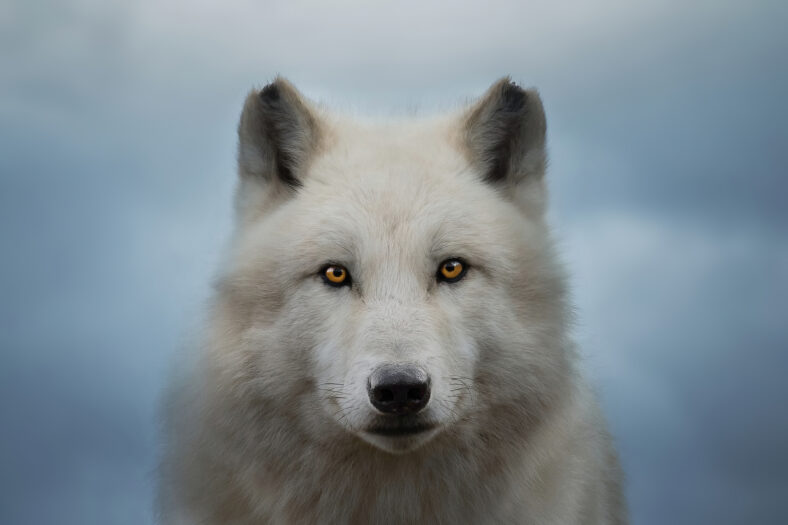Dire Wolves Have Been Brought Back To Life Thanks To This Biotech Company

More than 12,500 years ago, the dire wolf died out, but now, the species has been brought back to life by scientists from Colossal Biosciences, a biotech company based in Dallas, Texas.
They used ancient DNA, cloning, and gene-editing technology to alter the genes of a gray wolf, resulting in the creation of three dire wolf pups.
The gray wolf is the closest living relative of the prehistoric dire wolf. The result is a hybrid species that looks similar to its ancestor. So, technically, the puppies are not true dire wolves.
The dire wolf (Aenocyon dirus) was a fearsome predator that once roamed North America. They were larger than gray wolves, with slightly wider heads, thicker fur, and stronger jaw.
Since 2021, Colossal has been working on resurrecting the dodo, mammoth, and Tasmanian tiger, but the company had not previously made its work on dire wolves known.
“This massive milestone is the first of many coming examples demonstrating that our end-to-end de-extinction technology stack works,” said Ben Lamm, the cofounder and CEO of Colossal, in a news release.
“Our team took DNA from a 13,000-year-old tooth and a 72,000-year-old skull and made healthy dire wolf puppies.”
The three young wolves are named Romulus, Remus, and Khaleesi. They are living on a 2,000-acre site surrounded by a 10-foot-tall fence. Drones, live camera feeds, and security personnel keep a close eye on them.
According to Colossal, the facility has been certified by the American Humane Society and registered with the U.S. Department of Agriculture.

Sign up for Chip Chick’s newsletter and get stories like this delivered to your inbox.
The de-extinction team assembled two high-quality Aenocyon dirus genomes using ancient DNA extracted from two dire wolf fossils.
The ancient dire wolf DNA was too damaged to biologically copy or clone. They identified key segments of code in the DNA so they could edit in the biological information of a gray wolf.
The healthy developing embryos were then transferred into surrogates, which were large, mixed-breed domestic hounds.
Three pregnancies led to the successful births of the first de-extinct species. On October 1, 2024, two male dire wolf pups were born, while a female pup was born on January 30, 2025.
The final product was still a gray wolf but with dire wolf characteristics like a larger skull and white fur. Dire wolves diverged from gray wolves sometime between 2.5 and six million years ago, so they are two separate species.
“There’s no secret that across the genome, this is 99.9 percent gray wolf. There is going to be an argument in the scientific community regarding how many genes need to be changed to make a dire wolf, but this is really a philosophical question,” said Love Dalén, a professor in evolutionary genomics at Stockholm University and an advisor for Colossal.
“It carries dire wolf genes, and these genes make it look more like a dire wolf than anything we’ve seen in the last 13,000 years. And that is very cool.”
The dire wolf de-extinction represents a technological breakthrough. It is hoped that the same technologies used to bring the species back to life can help endangered animals as well.
You can check out more about the dire wolves here.
More About:Animals